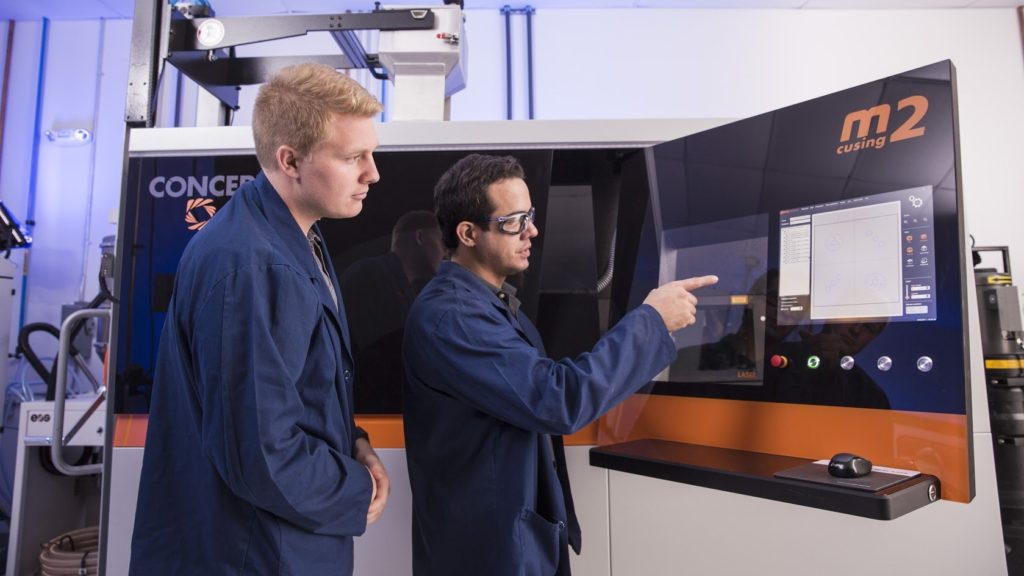In the process of re-using powder for metal 3D printing, splattered metal, known as powder condensate, must be sieved out and disposed of. Now, the Additive Manufacturing Green Trade Association (AMGTA) has created a report outlining a new method from Sintavia and KBM Advanced Materials for rendering the material safe for transport and recycling. As a result, this waste can be shipped without polluting the ecosystem and then converted into new metal feedstock.
Out with the Old
Among its activities, AMGTA researches additive manufacturing (AM) practices to understand and improve its sustainability. Within this purview, 3D printing service bureau Sintavia examined its metal powder bed fusion (PBF) operations to minimize adverse environmental effects, specifically pollution from powder condensate.
First of all, the solidified particles from metal alloy evaporation during the PBF process result in an additional waste stream. In order to keep limit the changes that the material might ignite, Sintavia mixes it with silicon oil and sand, thus passivating it. However, this makes it economically unfeasible to recover the metal powder and renders transportation dangerous.
In with the New
For this reason, Sintavia turned to a resin developed by KBM, which turns waste into a non-hazardous mixture that is easy to transport. The mixture reduces danger during transportation and improves the powder condensate’s recyclability.
The AMGTA created the passivation report to determine the sustainability levels of metal production and transportation, educating manufacturers on ways to reduce powder condensate pollution. This includes the collection of soot and material waste from passivation for processing.
The circular economy shrinks the gap between material mining and product manufacturing. It relies on recycled goods to reduce transportation emissions and ecosystem disruption. Minimizing pollution prevents climate change effects and environmental exploitation.
When Will KBM’s Material Hit the Market?
The passivation technology currently has a pending patent. The team expects the technology to transition out of the testing phase soon. Sintavia’s waste reduction technology may significantly improve manufacturing sustainability.
Subscribe to Our Email Newsletter
Stay up-to-date on all the latest news from the 3D printing industry and receive information and offers from third party vendors.
You May Also Like
Gorilla Sports GE’s First 3D Printed Titanium Cast
How do you help a gorilla with a broken arm? Sounds like the start of a bad joke a zookeeper might tell, but it’s an actual dilemma recently faced by...
Nylon 3D Printed Parts Made More Functional with Coatings & Colors
Parts 3D printed from polyamide (PA, Nylon) 12 using powder bed fusion (PBF) are a mainstay in the additive manufacturing (AM) industry. While post-finishing processes have improved the porosity of...
$25M to Back Sintavia’s Largest Expansion of Metal 3D Printing Capacity Since 2019
Sintavia, the digital manufacturing company specializing in mission-critical parts for strategic sectors, announced a $25 million investment to increase its production capacity, the largest expansion to its operations since 2019....
Velo3D Initiates Public Offering in a Bid to Strengthen Financial Foundations and Drive Future Growth
Velo3D (NYSE: VLD) has been among a number of publicly traded 3D printing firms that have attempted to weather the current macroeconomic climate. After posting a challenging financial report for 2023,...
































